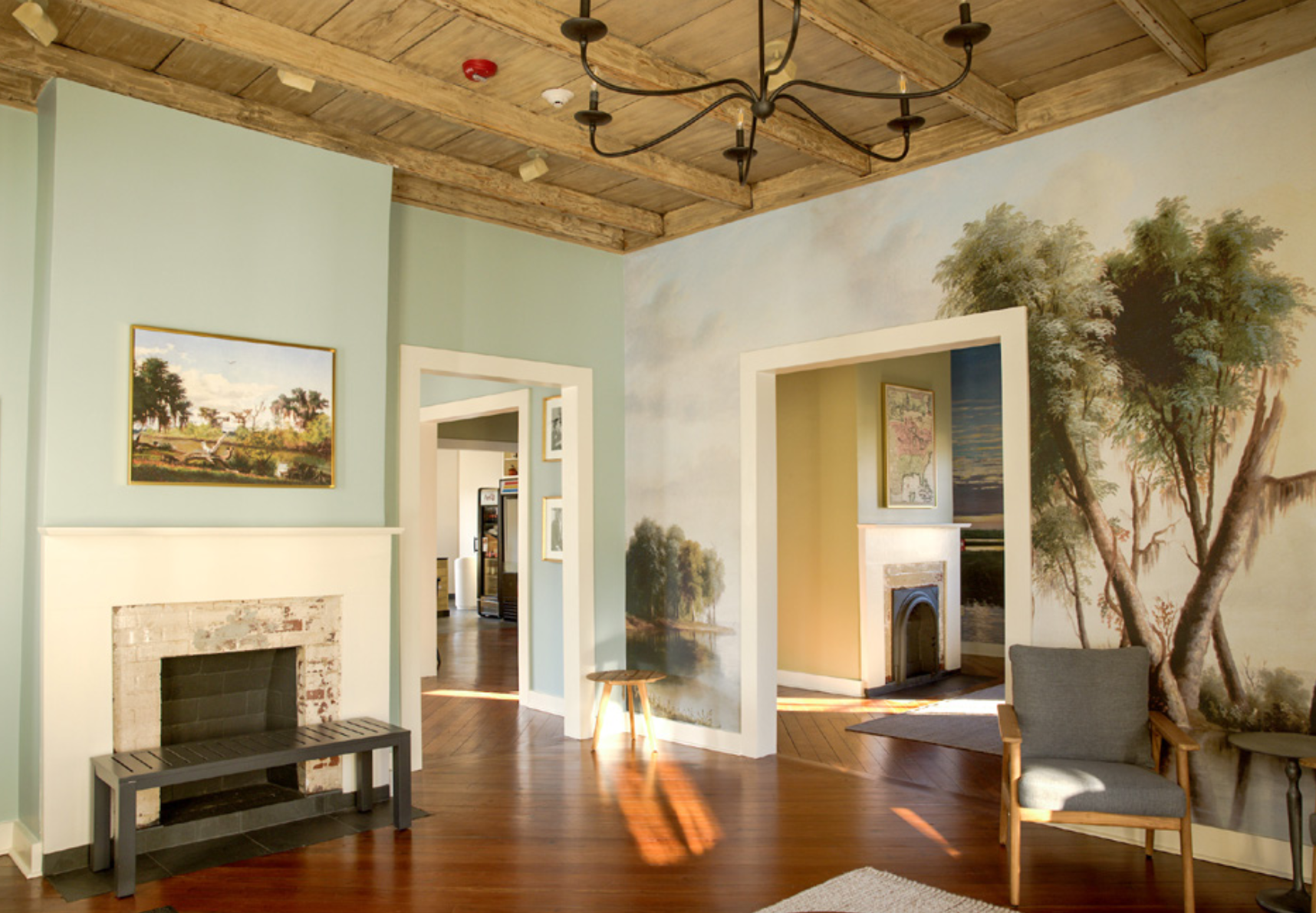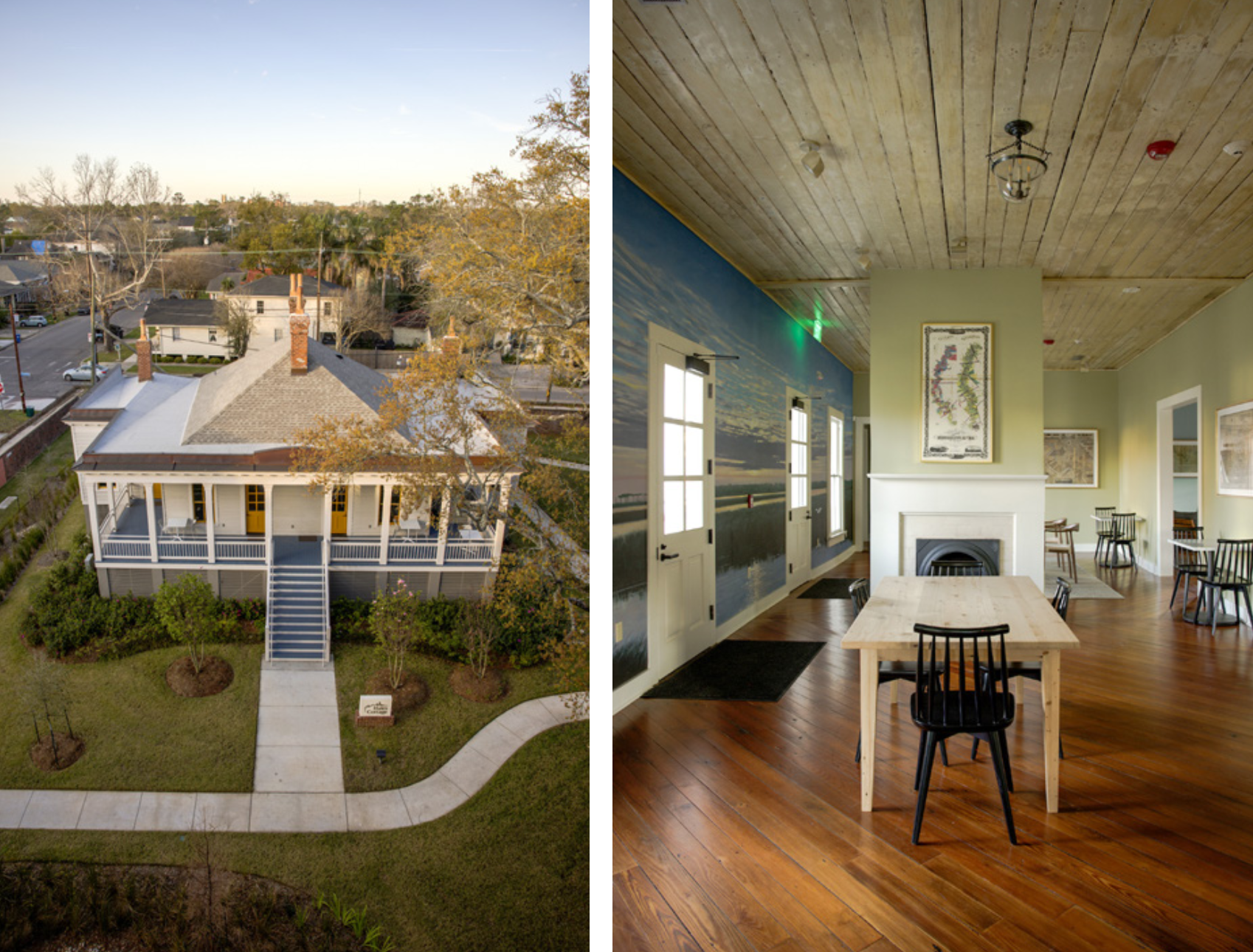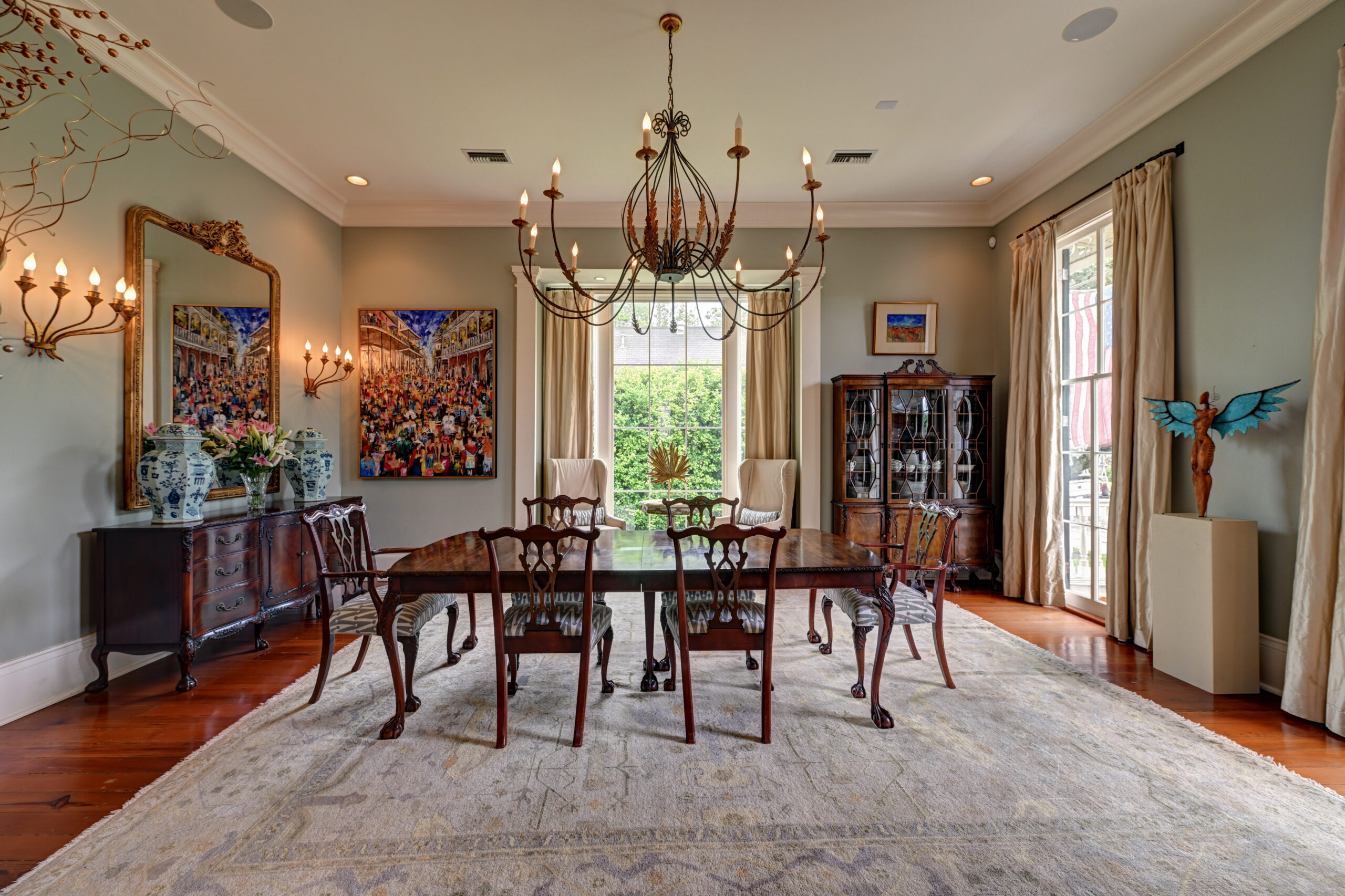Photos by Chris Granger
Signed copies of the book, The Cottage on Tchoupitoulas, published by the Preservation Resource Center in partnership with Children’s Hospital New Orleans, will be for sale at the Shotgun House Tour presented by Entablature Design + Build and Entablature Realty on June 11 and 12.
Hales Cottage — the subject of Tulane geographer Richard Campanella’s new book, The Cottage on Tchoupitoulas — is one of the oldest surviving structures in Uptown New Orleans, though it does not have one clear, documented construction date. It was built in at least three increments and moved at least three times. The exterior wings, galleries and ornamental façade date to the 1850s; the structural core, floor, roof, and chimneys date mostly to the early 1830s; and parts of the timber wall frames and other “bones” of the building date to the late 1700s, hewn from cypress trees likely growing nearby.
The cottage, which will be included on the PRC’s Shotgun House Tour, is now part of the campus of Children’s Hospital New Orleans, but the land on which it sits was once owned by Jean Baptiste Le Moyne, sieur de Bienville, the founder of New Orleans. In 1781, it became part of Jean Étienne de Boré’s vast plantation, which spanned more than 4,000 feet from present-day Eleonore Street into Audubon Park.
“Clean and simple in its beauty and proportions, the house was raised on piers and had cross-timbered walls, interior chimneys, and a French-style hipped roof,” Campanella writes in The Cottage on Tchoupitoulas. “The wings and gallery were added later, in the 1850s. If we proceed with the understanding that the inner frame dates to the late 1700s, as suggested by the hand-hewn beams, wooden pegs, and mortise-and-tenon joints, then it went up during a bustling time on the plantation.”
Indeed, it was on this plantation that sugar cane was first profitably processed into sugar in Louisiana, a feat that would go on to make De Boré and many other plantation owners very wealthy. Producing the crop on the De Boré Plantation was only possible thanks to the hard labor of nearly 100 enslaved men, women, and children.
After De Boré’s death, his vast plantation went through several owners, with some of the land eventually becoming part of a brickyard on the Mississippi River, while much of the rest was turned into residential developments. The cottage would become known as the “Overseer’s House” during the brickyard era.
By 1883, the cottage and the riverfront property immediately surrounding it were sold to the federal government, and by April 1885, the site would become home to the U.S. Marine Hospital.
While the original 19th-century hospital buildings were torn down to make room for new facilities in the 1930s, the cottage was spared the wrecking ball. By 1968, the Marine Hospital had 22 buildings and 20 trailers, where 464 civil service employees, 150 commissioned officers of the U.S. Public Health Service, and 93 on-call specialists provided health care to an average of 325 patients, plus nearly 400 outpatient visits per day.
But the hospital was not immune to a changing healthcare system and federal priorities. In 1981, all Public Health Service hospitals were closed, and the staff and services were consolidated into the Veterans Administration. On Oct. 3, 1981, the historic medical campus closed, and the federal property would soon be transferred to the state.
Meanwhile, next door to the Marine Hospital, the Crippled Children’s Hospital, which was founded in 1955 as a rehabilitation center, had expanded into the full-service Children’s Hospital New Orleans, and it needed room to grow. To accommodate that growth, Children’s leased some of the former Marine Hospital buildings from the state.
During this transition period, the historic cottage was deteriorating, and wind damage from Hurricane Katrina in 2005 exacerbated the decay. Vacant after the hurricane, the cottage was in disrepair.
Advertisement
Eventually, the state put the entire Marine Hospital campus up for sale, and its next-door neighbor, Children’s Hospital, purchased the property and all of its buildings, thereby gaining much-needed space to expand while also preserving the site’s “historic and architectural legacy,” Campanella wrote.
Children’s Hospital, now part of the LCMC network, worked with architecture firm Eskew+Dumez+Ripple to integrate the two campuses. As part of that project, the hospital fully renovated the cottage, now called Hales Cottage in honor of Nancy Hales and Dr. Stephen Hales, a beloved pediatrician who lived and worked at the U.S. Marine Hospital from 1975 to 1977. The couple helped spearhead the move to purchase the campus and restore the cottage.
Eskew+Dumez+Ripple worked with contractors in moving the cottage closer to its pre-1930s position and restoring it to its 1850s appearance. Sensitively renovated, the building will serve as a coffeeshop for hospital patients, families, staff and neighbors.
As Campanella writes, “To visit the Cottage on Tchoupitoulas is to connect materially with a silent witness of centuries of history in what is now Uptown New Orleans, where it stands as the sole remaining structural landmark of the area’s plantation era, and the oldest building in the vicinity.”
Signed copies of the book, The Cottage on Tchoupitoulas, published by the Preservation Resource Center in partnership with Children’s Hospital New Orleans, will be for sale at the Shotgun House Tour, presented by Entablature Design + Build and Entablature Realty.
Saturday & Sunday, June 11 & 12,
10 a.m. to 3:30 p.m. each day
Audubon Riverside neighborhood
Learn more & buy your tickets today!
Advertisements











